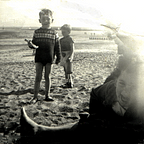About Advent
Brief guide to the words, music, customs & etymology
Word Origin
‘Arrival of a notable person or thing’ Oxford English Dictionary.
Advent derives from the Latin root, adventus. This approximates as ‘arrival’ through advenire, with ad meaning ‘to’ and venire ‘come’.
The origin is not biblical — the first reference to it in Christian teaching is in the late sixth century. By around the year 800 CE mid winter festivals were adapted to the Christian calendar. Advent became an umbrella term to describe the immediate period leading up to the celebration of the birth of Christ on Christmas Day.
Other Latin words became more widely used in English as a result of the Medieval ecclesiastical tradition — but as revived in the late nineteenth century and often through words of hymns.
Music
There is often a blurring between songs described as advent hymns and those more popularly known a carols. These are some of the best known:
O Come, O Come, Emmanuel/Veni, veni, Emmanuel
Sung during vespers or evening liturgy for the final week of Advent.
Isaiah 7:14 that God will give Israel a child symbolically called “Immanuel” (literally, “God with us”), which Matthew 1:23 says was fulfilled in the birth of Jesus. The music is probably a 15th-century processional hymn for French Franciscan nuns, though some argue it was part of a Gregorian chant seven centuries earlier.
Gabriel’s Message/The Angel Gabriel from Heaven came
Based on Luke 1: 26–38, where the angel Gabriel appears to Mary, telling her she will bear a son named Jesus. There are many different settings of this
Gaudete
Song associated with the first Sunday of Advent and the lighting of the Advent candle. This happens on the Sunday nearest to November 30 (December 3 in 2023).
Gaudete, gaudete! Christus est natus
Ex Maria virgine, gaudete!
(Rejoice Rejoice, rejoice! Christ is born Of the Virgin Mary Rejoice!
The melody is from a 16th century Finnish songbook, Piae cantiones, which in turn drew on various Latin texts. The English words were written by 1853, John Mason Neale (who also provided an English version of “Good King Wenceslas”).
A common assumption is that Gaudete was a popular medieval carol. The record sleeve of Below the Salt, the album on which the famous Steeleye Span version appears on plays into this myth
Customs
The wreath symbolizes the the journey from Adam until the awaited Second Coming — evergreens representing the eternal nature of God. It holds four equally spaced candles. The three purple ones are lit on the penitential Sundays. The pink candle is for Gaudete, the joyful third Sunday in Advent — which also symbolises the Second Coming.
Some Christian churches have an advent wreath with five candles. These are one for each of the four Sundays leading up to Christmas Day. The fifth wreath is for Christmas Day. There are also different readings on each of the four Sundays leading up to Christmas Day.
An Anglican Advent custom is that members of the congregation each look after a statuette of the baby Jesus for twenty four hours.
Colours
For most Christian denominations, Purple is the traditional colour of Advent. It is used for hangings around the church and for vestments during services.
In the Lutheran tradition, blue, representing hope, is the colour most associated with Advent. Calendars
The keeping of a special calendar is the most popular tradition associated with Advent. This originally relied on near universal familiarity with the story of the Nativity. Today many commercial Advent calendars have no religious iconography and are basically speciality item from Santa Inc.
Maria Walks Amid the Thorn — story behind one of the most beautiful Advent hymns here.
